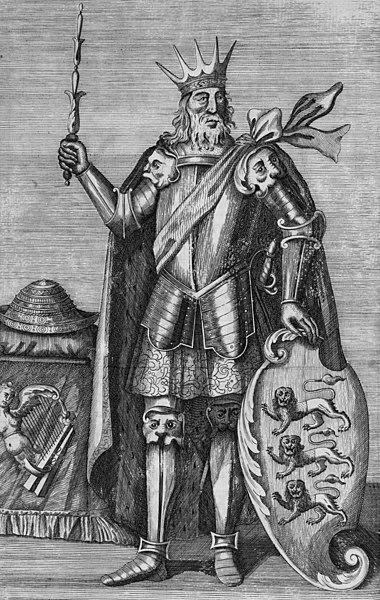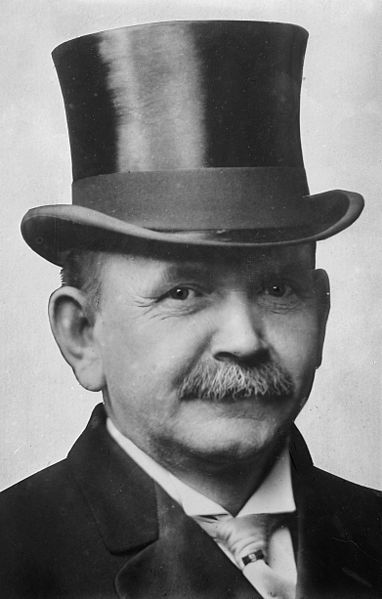An anachronism is a chronological inconsistency in some arrangement, especially a juxtaposition of people, events, objects, language terms and customs from different time periods. The most common type of anachronism is an object misplaced in time, but it may be a verbal expression, a technology, a philosophical idea, a musical style, a material, a plant or animal, a custom, or anything else associated with a particular period that is placed outside its proper temporal domain.
Ancient Greek Orpheus with a violin (invented in the 16th century) rather than a lyre. A 17th-century painting by Cesare Gennari
The Nuremberg Chronicle (1493) shows ancient Greek philosopher Aristotle in scholar's clothing of the book's time, 1,800 years too modern for Aristotle.
1723 depiction of the Irish High King Brian Boru (died 1014) showing him wearing plate armor (developed in the 15th century) and holding a coat of arms (only introduced after the Anglo-Norman invasion). In the background is the green harp flag (first used in 1642) and the Comerford Crown, which dates from the Bronze Age.
Moldavians and Muntenians become Brothers: 19th-century flags in a 16th-century scene
A top hat is a tall, flat-crowned hat traditionally associated with formal wear in Western dress codes, meaning white tie, morning dress, or frock coat. Traditionally made of black silk or sometimes grey, the top hat emerged in Western fashion by the end of the 18th century. Although it declined by the time of the counterculture of the 1960s, it remains a formal fashion accessory. A collapsible variant of a top hat, developed in the 19th century, is known as an opera hat.
ca. 1910 top hat by Alfred Bertiel
European royalty ca. 1859
Austin Lane Crothers, 46th Governor of Maryland (1908–1912), wearing a top hat
Self portrait (ca. 1770) of Peter Falconet (1741–1791). One of the earliest depicted prototypes of what became the top hat. In early prototypes, a sash around the crown was closed by a buckle. This was later dropped, in the same way as shoe buckles for male pumps were replaced by bowties around the turn of the 19th century.








